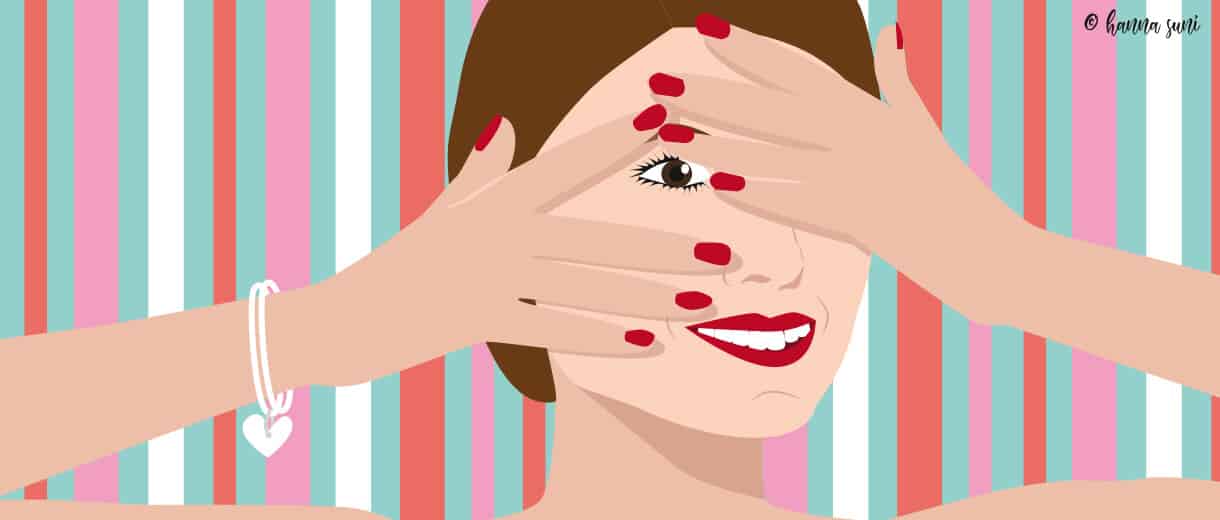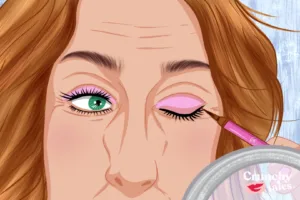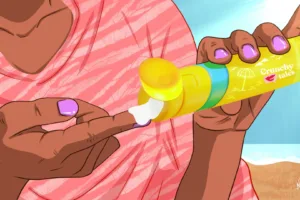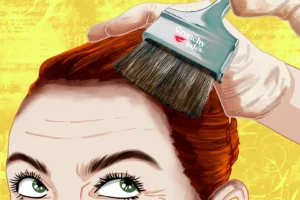I’m In My 50s, Why Do I Still Have Acne?
You thought you left those pimples behind in your teenage years, but here they come again. How is it possible? Many women notice changes to their skin at menopause. For some ladies, this means dryness and age spots. For others, estrogen levels drop while testosterone remains the same, which can prompt acne breakouts.
However, genetics, stress, dietary changes, lack of sleep, cosmetics and smoking are also implicated as trigger factors.
Adult acne can happen to anyone at any point in time – Dr Ifeoma Ejikeme, Director at Adonia Medical Clinic in London says-. It can be triggered by an event, such as using a product that is not good for your skin type or going through menopause. Also, it can be caused by a genetic component that is set off by something environmental. There is no magic wand for a quick fix: acne is a chronic condition that can be managed, but not quickly cured.
Acne occurs when hair follicles become plugged with oil and dead skin cells. Hair follicles are connected to sebaceous glands. These glands produce an oily substance known as sebum, which normally travels up the hair shafts and out through the openings of the hair follicles onto the surface of your skin. When your body produces too much sebum and dead skin cells, they can build up and plug the hair follicles, creating an environment where bacteria thrive. That can lead to inflammation or infection, causing pimples and other acne symptoms.
Why Is Adult Acne On The Rise?
According to The International Dermal Institute, one reason why adult acne is on the rise in the female population is because of the additional responsibilities that have increased women’s stress levels.
The pressure to work outside the home to help maintain a steady family income while maintaining a functioning household is critical. Chronic, continual stress can increase hormone levels, which can lead to an increase in oil production. Also, the psychological effects of adult acne can contribute to continued flare-ups and breakouts. When adults are frustrated by the signs of acne on their skin, it causes additional emotional stress, which contributes to a continued increase in excess activity of the sebaceous glands and leads to the continued cycle of breakouts and the need to “pick” or “squeeze” breakouts places even more acne-causing bacteria on the skin.
Research also indicates that acne arising in adulthood is more likely to be inflammatory, with fewer comedones than teenage acne and lesions predominantly located around the mouth, chin and jawline. Likewise, adults often have sensitized skin, or a combination of skin conditions in addition to their acne, which makes treatment more challenging than the treatment of teens, who generally have more resilient, uniform and oily skin.
How to Banish Adult Acne
While you may be tempted to reach for acne products designed for teens, your skin may not tolerate these harsh treatments as well as it might have in your younger years. When choosing products, respect the skin barrier. In adult acne sufferers, the skin is often dry and sensitive, and unable to tolerate the same treatments (or the same levels of ingredients) as robust teenage oily skin. Also, assess the products you are using: anything that increases oils in the skin is going to make the acne worse. Remove these products from your regime and look for water-based products, including suncream.
Look for products you can get over the counter that can help clear your pores, such as those containing salicylic acid or opt for topical retinoid that will help unclog pores and stimulate anti-wrinkle collagen growth — but start this regimen slowly, as it may irritate sensitive skin. Most of all, squeezing or picking at pimples must be avoided completely since the skin, which becomes more fragile at menopause, may scar more easily. If you can’t avoid the urge of pick and pop you might try acne patches, adhesive tiny plasters that use hydrocolloid technology to absorb toxins within the blemish, as well as create a moist environment for enhanced speedy healing (within 6-8 hours the bumps are significantly flatter)
In terms of healthful foods, leafy greens and a balanced diet with fruits and vegetables that contain vitamin C and beta-carotene can be helpful because these nutrients have an anti-inflammatory effect. Also, avoid excessive sugar, desserts and soda.
If your acne doesn’t respond to treatment, consider making an appointment with a dermatologist to address the problem. A specialist can help you determine the factors which may be triggering your acne by regulating hormones or treating the breakouts without drying or otherwise irritating your ageing skin. Prescription anti-inflammatories can be used to reduce inflammation and address the bacteria.
Dr Joshua Zeichner, the director of cosmetic and clinical research in dermatology at Mount Sinai Hospital, who has seen the number of adult female acne patients double now compared to five years ago, suggests a mild skin regime: “after cleansing, any more than three steps in the morning or evening is too much.” His preferred beauty routine is simpler: serum and sunscreen in the morning; moisturizer and a therapeutic product in the evening. He also advises giving products a monthlong trial to see results. No active ingredient works instantly unless it’s a hydrator or a plumper, which are only temporary benefits.





